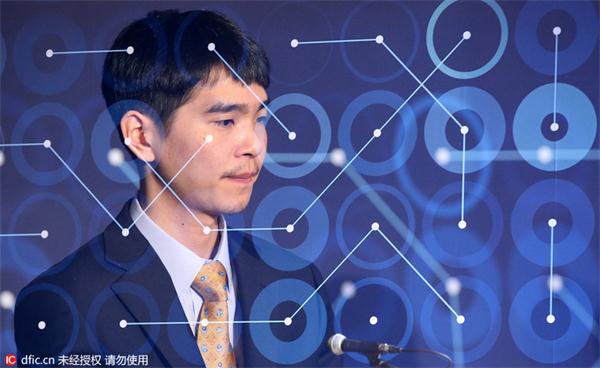Time to put AI knowledge to use
By Sun Xiangping (China Daily) Updated: 2016-03-19 09:22
 |
|
South Korean professional Go player Lee Sedol attends a press conference after finishing the final match of the Google DeepMind Challenge Match against Google's artificial intelligence program, AlphaGo. [Photo/IC] |
Google has never been away from news. But this time it is hogging the limelight because its artificial intelligence-powered AlphaGo has defeated South Korean Go master Lee Se-dol 4:1 in a five-match series. AlphaGo's victory has also prompted some observers to say Google is far ahead of Chinese technology companies in terms of AI research. Such a conclusion, however, does not reflect reality.
In terms of pure theoretical research in AI, China hardly lags behind the United States or any other country. Actually, it is hard to say which country is the leader because researchers across the world are cooperating rather than competing with each other. When a team achieves a technological breakthrough, it prefers to publish it in academic journals, which not just helps protect its intellectual rights but also allows researchers in other countries to share the vital information.
If we insist on comparing China and the US, there is hardly any gap between them because Chinese researchers have published almost as many papers as their US counterparts. At the 2015 International Joint Conference on Artificial Intelligence in Beijing in July 2015, chairperson Yang Qiang, who is also head of the Department of Computer Science & Engineering at the Hong Kong University of Science & Technology, said more papers were received and accepted from researchers in China than from any other country. That is the best footnote on AI researchers in China.
However, there are gaps between China and the US in other fields of AI. China lags behind the US when it comes to putting its theoretical achievements to practical use. In image recognition, an essential sub-sector of AI research, for example, our AI at Baidu can judge whether a face belongs to a certain person more accurately than humans do in a laboratory environment. But the same AI can hardly recognize a person's face in a group of similar ones, which can be easily done by a human being. So Chinese researchers need to find ways to better combine theory with practical use.
Google does this quite well. The driverless car it has been testing is a very good combination of image-recognition, scene-understanding and automatic-control technologies. By combining them well, Google has made a hitherto unthinkable product.
Creative thinking is another sub-sector in which Chinese researchers lag relatively behind their counterparts in some advanced countries. In other words, some of the creative products can be made by any company, but the one that makes it first is the winner.
Google's driverless car is one such example. The idea of a driverless car has been around since the 1980s, but Google took the lead in research in the current model. Chinese researchers have been doing so too but they are years behind Google, because they were not confident about the concept until Google announced its achievement.
Another example is Google Glass (contact lens), whose prototype emerged in April 2014 and which could monitor the blood sugar levels of the user. The application of the technology is valuable, but more valuable is the idea of combining a blood-sugar-monitoring device with contact lenses. These examples should, in the least, prompt Chinese researchers to think more creatively and apply the results to practical use.
The author is a software engineer at Chinese Internet giant Baidu Inc. This is an excerpt from his interview with China Daily reporter Zhang Zhouxiang.

I’ve lived in China for quite a considerable time including my graduate school years, travelled and worked in a few cities and still choose my destination taking into consideration the density of smog or PM2.5 particulate matter in the region.











